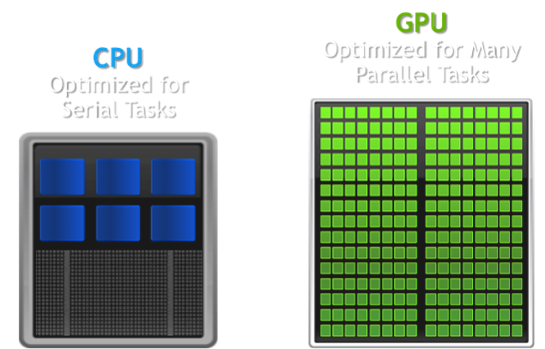Lecture 0: Introduction
Slide Deck Slide Deck - Dr. Sueda
About The Class
- Syllabus
- GradeScope
- Website overview
- Communication and questions
- GitHub Classroom
- Deadlines and late penalties
Subject Matter
- We will be learning and using C++
- We will be learning and using OpenGL
- We will be using Git to turn things in
Questions:
- Most comfortable programming language?
- Which class would you rather take a math class or drawing class?
- Why are you taking computer graphics?
- Game development (game industry)
- Animation (cg industry)
- Offline rendering (cg industry)
- Research (academic graphics)
GPU vs. CPU

C++
C++ is in some ways a combination of Java and C. It has syntax and a lot of other features borrowed from C, but also supports object-oriented programming similar to Java. One interesting aspect of C++ programming is that it is (typically, for most use cases and with a few small syntax changes) backwards compatibile with C. You can, for all intents and purposes, write a program in C and use a C++ compiler to compile it.
Perhaps one of the most notorious things about C++ (or at least one of the biggest problems the language currently faces) is building, especially when it comes to using and compiling with libraries.
Just like C, C++ can be compiled using Makefiles. But usually, we’ll use another program to automatically generate those Makefiles, called CMake.
This is a bit odd, because we’ve got quite a chain in order to compile our source code.
First we use CMake to generate a Makefile. Then, we use Make to execute this make file, in turn calling g++ or another actual compiler to compile the code.
If we opt to use and IDE instead of compiling on the commandline, we can still use CMake. That’s one of the reasons its so commonly used for C++ compilation.
- On OS X, CMake can generate XCode project files for us.
- On Windows, CMake can generate Visual Studio project files for us.
CMake can actually generate a ton of different build files, so chances are good that if you are using some other IDE it will still be supported.
However, I am an avid Visual Studio user and I kind of don’t care for using CMake to build my projects. So in addition to CMake configuration, I also include ready-built Visual Studio project files for all base codes. So as long as you are using the latest version of Visual Studio (2017), you don’t need to bother with CMake - you can just use my provided files.
Assignments
- Labs
- Smaller assignments, checked off in lab
- Sometimes build pieces for assignments
- Programs
- Larger assignments, turned in via GitHub Classroom
Units
- Introduction
- Build a software rasterizer
- Start talking about transformations
- Start talking about geometry and representations
- OpenGL
- How to use the API
- The OpenGL Graphics Pipeline
- Transforms
- More transforms??
- Hierarchical modeling
- Lighting
- Shading and lighting
- Reflection models
- Color theory
- Camera & Wrap-up
- Camera controls
- Scene setup
- A brief look at common graphics techniques